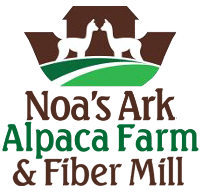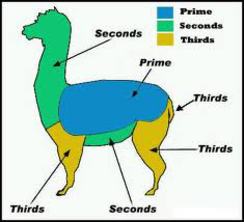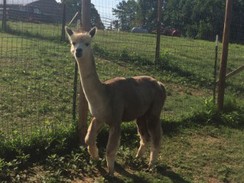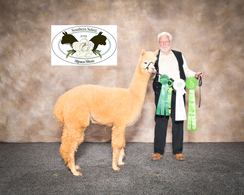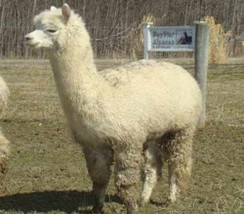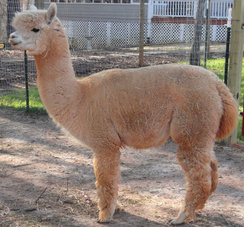FAQ's
What is the procedure for washing finished yarn?
Should I combine several fleeces as a batch?
Do I want to turn my fiber into yarn, roving, or batts?
What weight and ply yarns should I have made?
Do I want to have my yarn put into skeins or on cones?
Should I dye my fiber before I send it?
1. Washing instructions for your finished yarn:
For washing we suggest HOT water & a small amount of detergent. Let the skeins soak for 15 minutes then rinse in HOT water for approximately 5 to 10 minutes. This will remove any leftover conditioning oils & help the yarn blossom up.
You will then want to put your yarn in your washing machine on the spin cycle to spin out the excess water. We suggest using a linen/lingerie laundering bag.
After spinning, unwrap your skein & hang over (through) a rod to dry. If you have several skeins to dry, be sure to separate them on the rod for faster dying………
2. We only wash yarn when requested by the customer (see web site for pricing).
Many people prefer to wash their own yarn and avoid the additional cost. Whatever you decide, yarn should be washed prior to use.
- Yarn spun in our mill has a very consistent balance. By washing you will make it “Blossom”. Yarn that comes back unwashed will take on the look of a yarn one step down in size, i.e. what looks like lace will be more a fingering after it has been washed.
- Yarn coming directly from spinning and carding has organic processing oils left in the yarn (referred to as conditioning oil).
- If you do wash your own yarn be aware you are going to see the water turn a murky yellow almost dirty color. You might even see some small white foam appear on the water. Again, this is caused by the conditioning oil. You also may see a slight amount of dirt, this depends on the condition we received it in.
3. Should I combine several fleeces as a batch?
If you are processing fiber from several animals and plan to sell or use your yarn, it is nice to have enough to complete a project. This generally means combining like fiber for a larger yield of the same yarn. As long as multiple fleeces have the same micron and length, your end product should be consistent.
4. When do you blend your fiber?
The term “blending” means combining two or more fibers evenly into one batch.
You can blend several fleeces of the same type and color, blend in fiber of the same type but a different color, or you can blend different fibers for a versatile and unique product. Blending is a great idea if you want to make your yarn more appealing to fiber artists. For example, adding alpaca to wool creates a softer, warmer yarn that still has some “spring” to it. Adding silk or mohair to alpaca will increase durability and shine. Many sock yarns include either bamboo or nylon for strength and easy washing.
Some blending options include:
ADDING MERINO WOOL
Merino wool adds shine and softness. It is a fine, yet strong fiber that holds dye well and is not itchy. Adding merino to a coarse, short-stapled or tender fleece will improve your end product.
ADDING ALPACA
Alpaca fiber is best known for its tremendous warmth and insulation with soft drape and texture. It’s used in garments worn close to the skin as well as baby clothing and blankets. Huacaya fiber produces a yarn with loft where Suri fiber is usually smooth and silky. Adding alpaca to wool will add softness and drape.
ADDING MOHAIR
The Angora goat produces mohair wool, known for its silkiness and lustrous sheen. Mohair is strong, durable, breathable, and lightweight. Although it accepts dyes well, natural mohair is exceptionally beautiful because of its color variations. Adding Mohair to any other fiber gives it luster and strength.
ADDING ANGORA
Angora is an extraordinarily soft fiber produced from the fur of the Angora rabbit. Angora fibers are hollow, which gives them loft and a characteristic `floating’ feel. Blend Angora with other fiber to increase warmth and enhance softness.
ADDING SHETLAND WOOL
Raised on our farm in Cleveland, Shetland sheep produce very fine, lustrous wool from the down of their soft undercoat. The warm, lightweight Shetland wool is only available in limited quantities and is mostly used in the production of high-end knitwear.
ADDING SOYSILK
SOYSILK® brand fiber is made from the residue of soybeans from tofu manufacturing. This process is 100-percent natural and free of any petrochemicals, making it an extremely environmentally friendly product. SOYSILK® brand fiber offers superior moisture absorption and ventilation properties along with beautiful draping, softness and warmth.
ADDING MULBERRY SILK
Mulberry silk is the highest quality silk you can purchase. It is made from silkworms that are raised in captivity under exacting conditions. Silk wicks moisture and stays dry and warm like wool, but has little elasticity. Silk has a smooth surface and takes dye beautifully. By combining alpaca and silk in a yarn, you get the softness and elasticity of alpaca and the shimmer and drape of silk.
5. Do I want to turn my fiber into yarn, roving, or botts?
Yarn is used for weaving, knitting, crocheting and other fiber arts. If you have a fleece with uneven fiber lengths, it may be better suited for roving or batts because a hand-spinner or felter can manipulate the fiber better than the machine can.. If you don’t have anything specific in mind, we are happy to evaluate your fleece and make suggestions based on the character of the fiber.
6. What weight and ply yarn should I have made?
Several things must be considered when selecting a yarn weight and ply. Do you have customers asking for something specific? Do you have a project in mind for a particular fleece? Is the fiber appropriate for the yarn you want? Things to take into consideration are fiber type, staple length, and micron. If you are unsure, contact us for a free consultation any time. Our goal is to give you the best yarn possible from the fiber you have.
7. Do I want to have my yarn put into skeins or on cones?
Skeins are usually used for knitting or crocheting. It is easier to see the character of the yarn and nicer to feel yarn in a skein. Cones are used by weavers and knitting machines.
8. Should I dye my fiber before I send it?
Some people like to dye their own fiber before putting it into roving, batts or yarn. Others prefer to dye the yarn in skeins. There is no right or wrong. It just depends on the affect you are looking for.
Sunday, January 28, 2018
